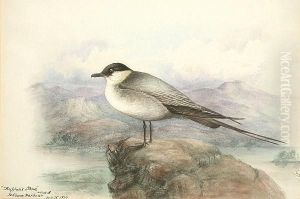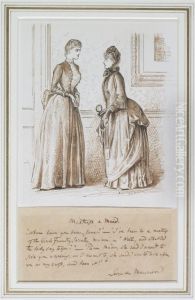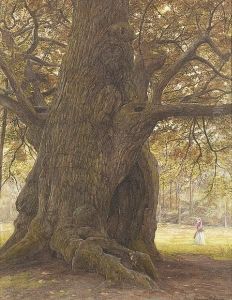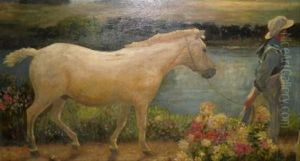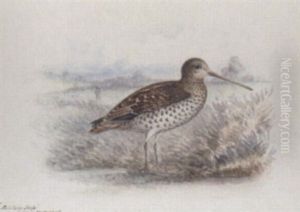George Edward Crawhall Paintings
George Edward Crawhall, born in 1864, was a notable British artist, primarily remembered for his distinctive contribution to the Arts and Crafts movement and for his exceptional skills in watercolor and illustration. His work often depicted scenes of rural life, animals, and sporting activities, particularly those involving horses and dogs, reflecting his deep interest in the countryside and its traditions. Crawhall's style was unique, blending simplicity with a keen observation of his subjects, which set his work apart from his contemporaries.
Crawhall's life, though relatively short, was marked by a passionate dedication to his art. He was born into a creative family, which was instrumental in nurturing his early interest in art. Despite the lack of extensive formal training, Crawhall developed a distinctive style early on, influenced by his personal experiences and the rich cultural heritage of Britain. He traveled extensively within the British Isles, capturing the essence of rural and pastoral life through his art. His travels and experiences contributed to his evolving artistic style, which garnered appreciation for its originality and authenticity.
Throughout his career, George Edward Crawhall remained somewhat of an enigmatic figure, often shying away from the limelight and the commercial aspects of the art world. His reluctance to exhibit widely or engage deeply with the commercial art market resulted in him being less well-known than some of his contemporaries. However, his work was highly regarded by those who knew it, including his peers and art collectors who appreciated the subtlety and depth of his work.
Crawhall's contribution to the field of illustration is also noteworthy. He illustrated several books, bringing stories to life with his intricate and expressive drawings. These works further showcased his versatility and skill as an artist, earning him accolades and recognition in literary circles.
George Edward Crawhall passed away in 1913, leaving behind a body of work that continues to be admired for its beauty, simplicity, and genuine portrayal of British rural life. His legacy is that of an artist who remained true to his vision, capturing the essence of his subjects with a gentle yet profound touch. Even today, Crawhall's work is celebrated by art historians and collectors alike, serving as a testament to his talent and unique perspective on the world around him.
